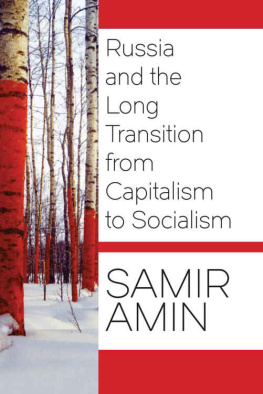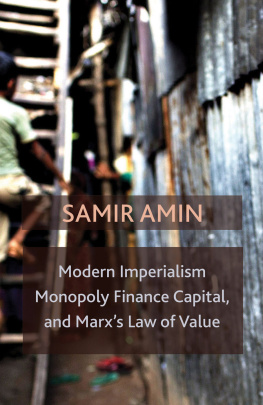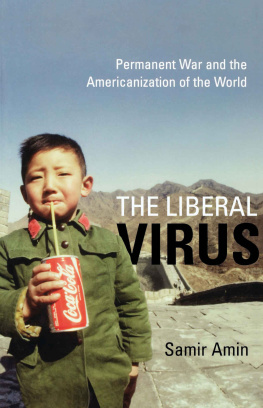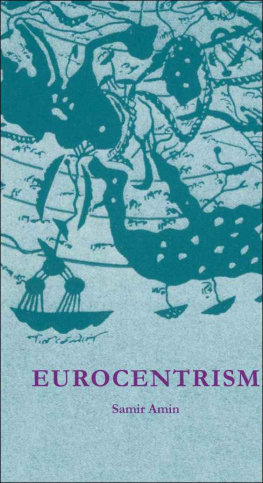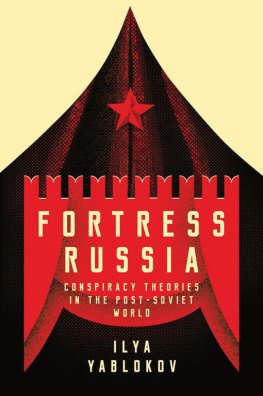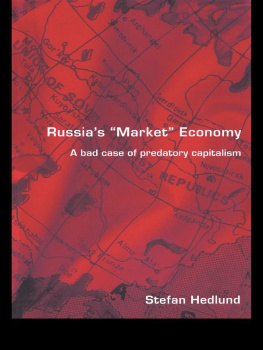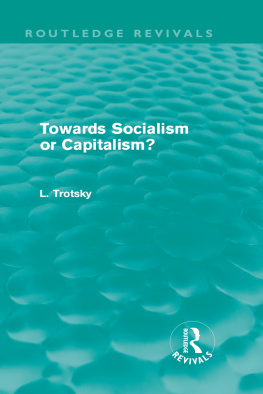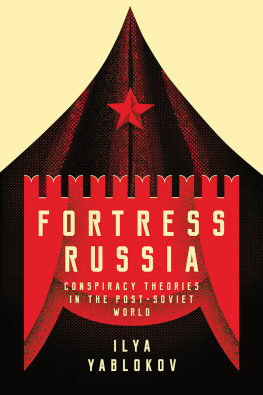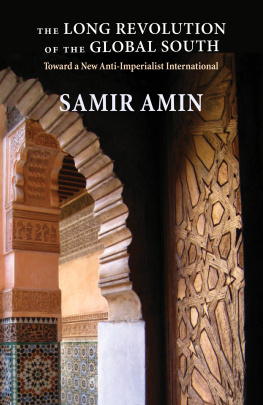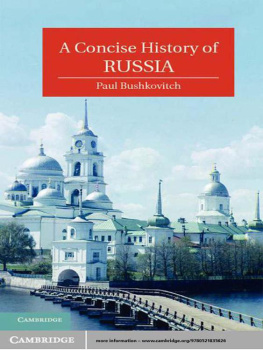Russia and the Long Transition from
Capitalism to Socialism
RUSSIA AND THE
LONG TRANSITION
FROM CAPITALISM
TO SOCIALISM
Samir Amin

Copyright 2016 by Samir Amion
All Rights Reserved
Library of Congress Cataloging-in-Publication data available from the publisher.
Names: Amin, Samir.
Title: Russia and the long transition from capitalism to socialism / Samir Amin.
Description: New York : Monthly Review Press, 2016. | Includes bibliographical references and index.
Identifiers: LCCN 2015049045| ISBN 9781583676011 (paperback) | ISBN 9781583676028 (hardcover) | ISBN 9781583676035 (e-book trade) | ISBN 9781583676042 (e-book institution)
Subjects: LCSH: Russia--Social conditions. | Soviet Union--Social conditions.
| Russia--Economic conditions. | Soviet Union--Economic conditions. | Social change--Russia--History. | Social change--Soviet Union--History. | Capitalism--Russia--History. | Socialism--Soviet Union--History. | Soviet Union--History--Revolution, 1917-1921--Influence. | Soviet Union--History--1985-1991.
Classification: LCC HN523 .A68 2016 | DDC 306.0947--dc23 LC record available at http://lccn.loc.gov/2015049045
Typeset in Dante Monotype
Monthly Review Press
146 West 29th Street, Suite 6W
New York, New York 10001
monthlyreview.org
5 4 3 2 1
Contents
1. Russia in the Global System:
History or Geography?
3. Thirty Years of Critique of the Soviet System
(19601990)
4. Lenin and Stalin:
Facing the Challenge of the Century
6. The Ukrainian Crisis and the Return of Fascism in
Contemporary Capitalism
THE ESSAYS COLLECTED IN THIS BOOK CHALLENGE the currently fashionable views that are promoted by the media clergy, through their use of propaganda, on behalf of the financial aristocracy. Russia, as was the Czarist Empire and the Soviet Union, is continually presented as a horribly despotic and aggressive nation against which the civilized peoples of Europe have always had to, and still must, protect themselves. Today protection is available thanks to the military power of the United States and NATO. These cookie-cutter judgments will be revisited in the conclusion of this book.
The various essays here focus on complementary aspects of a very different interpretation of Russian history, one that is viewed in the long run, within the context of a global history that places Russia in the world system at each of the successive stages of its development.
Although these essays were written at different moments between 1990 and 2015, they all contribute to shaping an image of Russia that is quite different from the one that is disseminated in the propaganda of the Western countries. It is only by using a scientifically accurate analysis of history (and it is up to the reader to judge the quality of my effort) that it is possible to envisage the various prospects available to the peoples of Russia and the former Soviet Union and the conditions of their reemergence in the world of tomorrow.
1. Russia in the Global System:
Geography or History?
The double collapse of Sovietism as a social project distinct from capitalism and the USSR (now Russia) calls into question all the theories that have been put forward both regarding the capitalism/socialism conflict and the analysis of the positions and functions of the different countries and regions in the world system. These two approachesthe first giving priority to history, the second to geography, are often exclusive of one another. In the tradition of historical Marxism, and particularly in its predominant version in the former USSR, the only great problem of the contemporary world recognized as worthy of scientific treatment was that of the passage of capitalism to socialism. As from Lenin, a theory of revolution and socialist construction was gradually formulated, which is summarized in the following points:
(i)capitalism must finally be overturned throughout the world through the class struggle conducted by the proletariat;
(ii)the socialist revolution has started in certain countries (Russia first, later in China) rather than in others because they constituted, for various reasons, the weak links in the chain of world capitalism;
(iii)in those countries, the construction of socialism is possible in spite of their late development;
(iv)the transition of capitalism to socialism will therefore evolve in, and through, the competition between the two state systems, some of which have become socialist, the others having (provisionally) remained capitalist.
In this type of analysis, historywhich governs the social and political particularities that constitute the different societies in the modern world (including those of the weak links)plays the key role, to the point that the geography of the world system, in which the various positions and functions of these societies are determined, is entirely subordinated to history. Of course, the reversal of history, overturning the irreversible socialism on behalf of capitalism, must question the whole theory of the transition to socialism and its construction.
Geography, however, takes on another dimension in, for example, an analysis of the movement of modern history that is inspired by the fundamental principle of what one can call, to be brief, the world system approach: what happens at the level of the whole (the world system) controls the evolution of the parts that compose it. The roles played by the Russian Empire and by the USSR would therefore be explained by the evolution of the world system, and this is what makes it possible to understand the collapse of the Soviet project. Just as the extremists among the historical Marxists only know the class struggle through history, an extremist interpretation of the world system approach is possible, one that virtually eliminates class struggle because it is incapable of changing the course imposed on it by the evolution of the system as a whole.
It is useful to mention here that theories about the specificity of Eurasia and its particular place in the world system preceded the formulation of the world system approach by several decades. In the 1920s, Russian historians (Nikolai Trubetzkoy and others) had put forward such proposals, which were then forgotten by official Soviet conformism, but they were resuscitated in recent years. The theses developed in an article by Andrei Fursov in Review recall the theory of the Eurasian specificity in certain aspects and distinguishes it from others. I would be in favor of a synthesis of the two types of analysis, particularly as concerns the Russian-Soviet case. Having already defended such an approach in more general terms, I believe such a synthesis to be enriching for Marxism.
Between the years 1000 and 1500, the world system was clearly composed of three main blocs of advanced societies, China, India, and the Middle East, to which can be added a fourth, Europe, whose development was extremely rapid. It was in this last region, which had been marginal until the year 1000, that the qualitative transformations of all kinds crystallized and inaugurated capitalism. Between Europe and eastern Asiafrom the Polish frontiers to Mongoliastretched the Eurasian landmass, whose position in the global system of the period largely depended on the way these four regions articulated what can be called the ancient world system (precapitalist tributary social system, if my definition of these social systems is accepted).
It seems impossible to give a convincing picture of the birth of capitalism without taking into consideration the two sets of questions concerning (i) the dynamics of the local transformations in response to the challenges confronted by these societies, particularly the dynamics of social struggles, and (ii) the articulation of these dynamics in the evolution of the ancient world system seen as a whole, in particular the transformation of the roles of the different regions that composed the ancient world system and, therefore, the functions of the Eurasian region.
Next page
